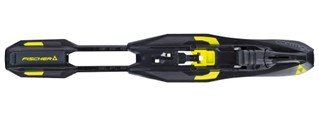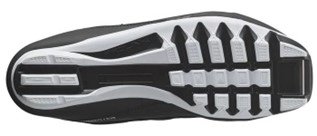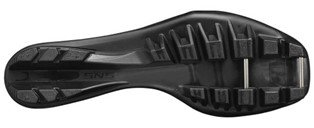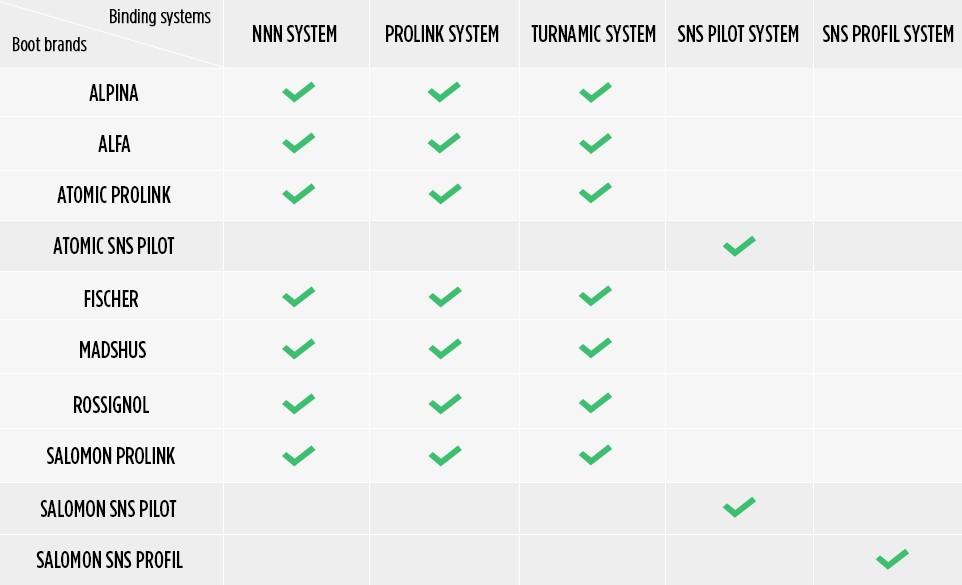Cross-country ski bindings come in 4 standards (Prolink, NNN, Turnamic, and SNS) with different compatibilities depending on the boots used. However, it can sometimes be tricky to navigate when you are not accustomed to or particularly interested in equipment. To assist you, here is a brief overview of the current standards that will help you make the right choice of boots and bindings.
Prolink, NNN and Turnamic bindings


Prolink, NNN, and Turnamic bindings are compatible with each other, which offers great flexibility in choosing your equipment.
Brands such as Fischer, Rossignol, Atomic Prolink, Alpina, Madshus, and Salomon Prolink design boots that are compatible with Prolink, NNN, and Turnamic bindings.
But how do these bindings work? Thanks to a system of 2 grooves and 2 ridges. Under the sole of the boot, 2 grooves align perfectly with 2 ridges on the ski binding. At the front of the boot, a bar fits into a notch in the binding. This configuration creates a stable and robust connection between the boot and the ski, thus ensuring precise guidance and optimal control.
NNN, Turnamic, and Prolink binding systems offer a very interesting feature: they are adjustable, allowing you to optimize your performance on the snow.
For Classic Skiing:
For Classic Skiing:
In classic skiing, the position of the bindings greatly influences two aspects: grip and glide. When you are on soft spring snow or when you need more grip, simply slide the bindings forward. This moves your weight a bit more to the front of the ski, increasing the pressure on the skins or the kick wax zone under the ski, which improves grip.
Conversely, if you want a better glide or if you encounter hard snow conditions, move the bindings backward. This reduces the pressure on the front part of the ski, allowing for better flow and less friction with the snow.
For Skating:
Skating, on the other hand, requires a slightly different approach. If you're looking to improve your stability, especially on changing snow conditions or when learning the basics, move the binding forward. This increases stability by placing more weight on the front of the ski.
To increase manoeuvrability and ease of turning, try placing the bindings toward the back. This position makes the ski more responsive and facilitates quick changes in direction, which is especially useful on technical trails or during sprints.
Conversely, if you want a better glide or if you encounter hard snow conditions, move the bindings backward. This reduces the pressure on the front part of the ski, allowing for better flow and less friction with the snow.
For Skating:
Skating, on the other hand, requires a slightly different approach. If you're looking to improve your stability, especially on changing snow conditions or when learning the basics, move the binding forward. This increases stability by placing more weight on the front of the ski.
To increase manoeuvrability and ease of turning, try placing the bindings toward the back. This position makes the ski more responsive and facilitates quick changes in direction, which is especially useful on technical trails or during sprints.
SNS bindings


The SNS standard (Salomon Nordic System) was developed by Salomon and is also used by Atomic. It's important to know that SNS bindings are only compatible with boots specifically designed for this system, namely SNS standard models.
The SNS standard is divided into two main categories: SNS Profil and SNS Pilot. Although they share the SNS name, these two standards are not interchangeable. This means that SNS Profil boots will not fit SNS Pilot bindings, and vice versa.
SNS Profil uses a single attachment bar under the boot. It's an older system but still effective for recreational skiers.
SNS Pilot is an evolution of the Profil system, characterized not only by two attachment bars but also by a guiding plate. This improved design provides better stability and increased control, which is particularly appreciated by experienced and competitive skiers.
SNS Profil uses a single attachment bar under the boot. It's an older system but still effective for recreational skiers.
SNS Pilot is an evolution of the Profil system, characterized not only by two attachment bars but also by a guiding plate. This improved design provides better stability and increased control, which is particularly appreciated by experienced and competitive skiers.
Although the SNS standard has been popular, it is gradually disappearing from specialty stores. This is due to the evolution of technologies and the emergence of new binding standards. However, it is still possible to find SNS equipment on the second-hand market.
Compatibility between boots and bindings chart

